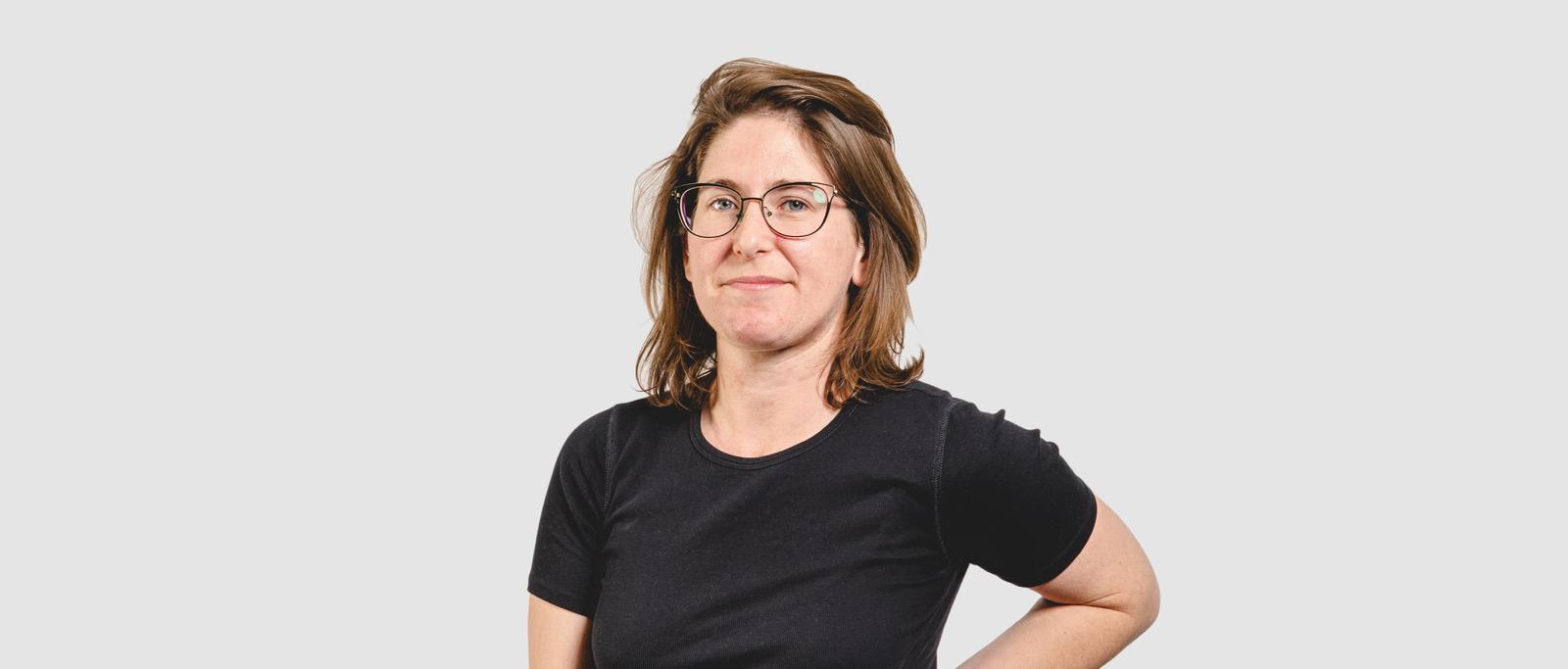
Jordan Shade
Design Lead,
IBM Services
↓
I’m a senior design lead who designs for our client-facing business from a place of internal strategy and transformation. My background is in design thinking and design research, and also fine art. I’m a new mom, live in Austin, and have been at the studio here almost since it opened. I really love working at IBM because the people are so smart and creative and determined. I’m also part of an art collective and a founding member of a local civic engagement group that publishes zines.
I loved art and performing from a young age. I ended up studying art formally after a few major changes in college and even shrugged off the idea of studying design due to a lack of interest in “fonts.” After getting my BFA from the University of Texas, focused on printmaking and sculpture, I felt lost trying to apply my making and storytelling skills in the real world. I found myself teaching at a Reggio Emilia day care—it’s an Italian pedagogy that focuses on observing and documenting children’s play and then developing personal curriculum based on what you see. Basically, design thinking! I didn’t know it yet, but fell in love with the approach and, over time, completely redesigned my classroom and all the toys in it. Eventually, I knew I wanted to pursue the field further and ended up in grad school for design research and strategy. My first job after graduating was at IBM Studios Austin. I still relish in the making and storytelling of my job now.
About two and a half years ago, I went on maternity leave for six months. I saved up and took off extra time because I wanted to spend more time with my son and I really believe three or even four and a half months is too short to spend with an infant full-time, as a mother in that first year. I had a very fortunate situation and a fantastic female manager that made it all possible—but there’s no way my career path continued perfectly seamlessly after that absence. Especially as I imagine having another kid, I think a lot about the disruption it makes: for me, for my team, for my work. It takes a lot of actual planning to ensure that as a new mom you still have results and impact to show for your work, stay connected to the beat of the business drum, stay relevant to the people who are in your ecosystem. It’s a very nuanced situation that I feel often happens right when your career might really be taking off. And the reality is, you can’t weigh family against work—they’re just not really comparable except that they both require attention, nurturing, and sacrifice.
I just became a manager last year for the first time in my career. It’s a very exciting platform to be able to represent women designers from my team and at large. At the personal level, I take managing women employees very seriously and don’t shy away from conversations about gender. In general, as a leader on my team with the other managers, I am always examining how I can help set conditions for my women colleagues at our whole team level to better help them succeed. Sometimes, it’s as simple as making sure my colleagues who are mostly men see their own potential bias or hear what they’re saying from a different perspective. Other times, it really can be listening extra actively to someone’s point of view in critique and making sure I recognize my own bias. At the end of the day, I see my position as a place where I should always be lowering a ladder for other women designers and helping them climb up with me as I continue to gain eminence and influence.
I wouldn’t have taken such a long leave when I became a parent, and I think I would have been on a slightly different path because of that. Generally, I feel very privileged because of my sexuality, my race—I’m also quick to be an extrovert when needed, so I don’t often keep quiet. But at the same time, most of the leadership at IBM Design was completely made of men when I joined, and the reality is without more than just one person modeling specifically women leadership, it can be a slow process to find your own style, or see what works in our specific culture. Those optics don’t just matter to early-career women designers, either. When the rest of the business sees women leaders in design, and that the company takes them seriously, it’s a lot easier to get work done, to be heard, and be invited into the important conversations, because you’re not the only one; it’s just the norm.
Collaborate with women designers (or women in other fields). Collaboration and co-creation make your work, thinking, perspectives—all of it—stronger. As a woman, share your talents with other women, support each other, catapult each other. Otherwise, when you start up a new cool project or initiative, look around and see if there is any women representation sharing in that idea. This year, I started a monthly women’s lunch in my division with all the designers, just to get people talking and sharing with each other. It’s both social and a place to seek advice or support, and lately we’ve been talking about partnering up to apply for conferences. Sometimes we need to make the great work more visible to push for more equality in visible power.